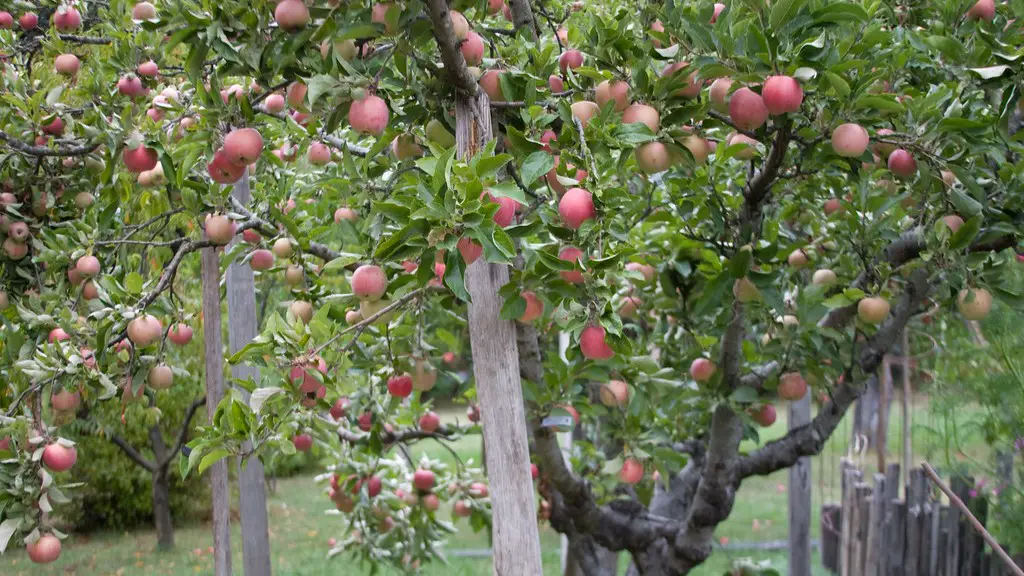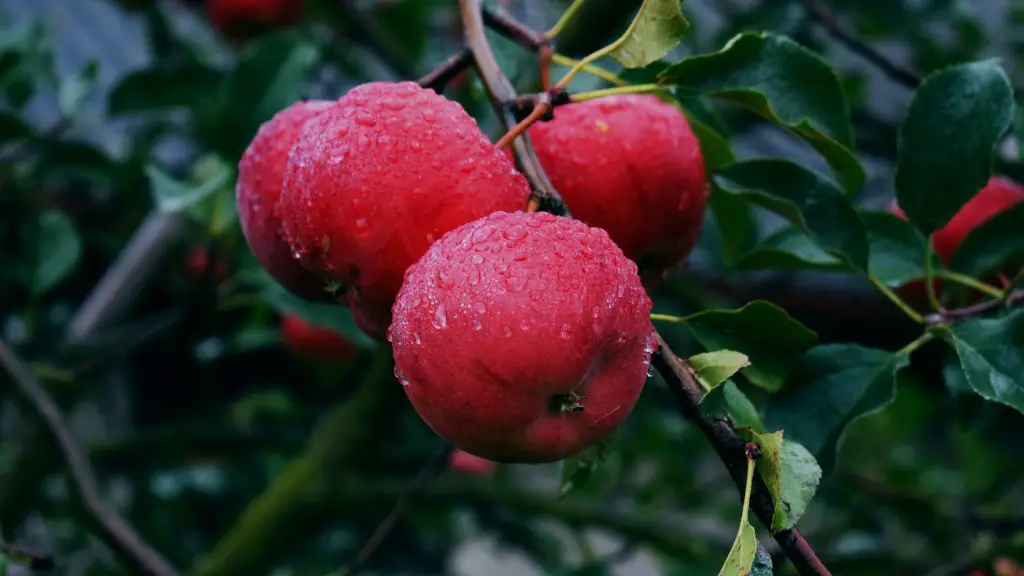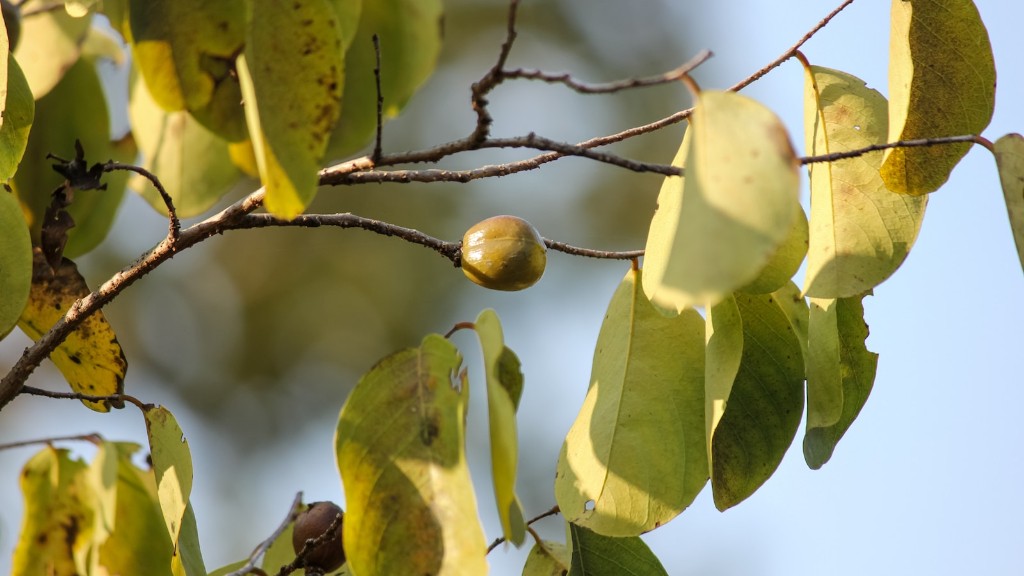Are you looking for a creative way to grow apples in your backyard? Espaliering is the answer. Espaliering is the technique of training a tree’s branches onto specific shapes along a horizontal plane. This is a great way to use vertical space in your backyard and reduce pruning needs as the trees mature. In this article, we’ll discuss how to espalier an apple tree.
The first step is to select an apple variety that is compatible with your climate. Most apples will not do well in extreme temperatures. Research the recommended varieties to ensure success. Then, obtain a young apple tree and plant it in a sunny spot with well drained soil.
It is important to prune the tree in order to encourage branching and promote good health. When pruning, remove any crossing branches or shoots that could rub against each other. You should also remove excessive shoots from the inner parts of the tree. This will increase air circulation and reduce the risk of fungal infection.
Once the tree has reached a suitable height, you can begin training the branches. Use wires and other forms of support to shape the branches along the horizontal plane. Make sure to train the branches in an outward and downward direction as you go. This will help promote better fruit production.
During the course of the tree’s development, you will need to be diligent in your pruning. This will involve removing any weak, tangled or dead branches as needed. Don’t hesitate to prune if it will create a more desirable shape, as this will help improve the overall health of the tree.
Fruit production should take place several years after planting and espaliering the tree. Don’t be discouraged by the time it takes for the tree to produce fruit. Apple trees take 3-5 years from planting to maturity. In the meantime, take pride in the beautiful shape and enjoy the subtle fragrance of freshly blossomed apples.
Training Techniques for Apple Trees
When it comes to espaliering an apple tree, there are several techniques you can choose from. The most popular technique is the horizontal cordon, which involves training the main branches along the horizontal plane. This method works well with trees that need plenty of sunlight. Another popular technique is the step-over technique. This technique involves creating a series of “steps” along the horizontal plane. This method is best suited to cold and damp climates.
The fan and tripod techniques are also used when espaliering apple trees. The fan technique involves expanding the branches outward like a fan, while the tripod technique involves training the branches in a “Y” shape. Both techniques should be used in climates with moderate temperatures.
A final technique is the quincunx technique, which involves training the branches in a square pattern. This technique is best used in climates that are not too hot or too cold. With any of these techniques, it is important to remember that the ladder method is necessary for training the branches.
Fruit Production after Espaliering
Once the tree is espaliered, it will be ready for fruit production. Depending on the climate, apples can be produced from early summer to late autumn. To encourage good fruit production, it is important to prune the branches regularly. Pruning can be done at the end of winter or early spring. Make sure to remove any diseased or dead branches to promote healthy growth.
It is also important to water the plants regularly and use appropriate fertilizers. When watering, make sure to do so in the morning or evening to avoid evaporation of the water. Additionally, mulch around the roots of the tree to conserve moisture and reduce weeds. Mulching also increases the amount of organic matter in the soil, which helps the tree get necessary nutrients.
Finally, apples should be harvested when they are ripe, usually when the color of the skin turns from green to yellow. Make sure to inspect the apples for signs of bugs or disease. If any of these are found, discard the affected fruits. Harvested apples should be stored in a cool, dry place.
Pest and Disease Management for Espaliered Apple Trees
Like all trees, espaliered apple trees are susceptible to pests and diseases. While regular pruning and mulching can help reduce the risk of infestations and infections, they are not foolproof. To protect your apple tree from pests and diseases, it is important to use effective pest and disease management techniques.
Insect pests can be managed by using preventative techniques such as insecticides, traps, and pheromone-based management. These techniques will help reduce the population of the insect pests and reduce their impact on the tree. Diseases can be managed by using fungicides and other methods depending on the type of disease.
When using pest and disease management techniques, make sure to use a suitable product for the apple tree. It is also important to follow all dosage instructions carefully. Additionally, it is important to inspect the tree regularly for new pests or signs of disease. Treating the problem early will reduce the impact on the tree and ensure that it remains healthy.
Tips for Espaliering Apple Trees
Espaliering an apple tree can be a rewarding experience. Here are some tips to help make espaliering a success:
- Choose a tree variety that is suitable for your climate.
- Plant the tree in a sunny spot with well-drained soil.
- Prune the tree regularly to encourage branching and reduce risk of infection.
- Train the branches along the horizontal plane.
- Harvest apples when they are ripe.
- Use preventative pest and disease management techniques.
With the right care and attention, an espaliered apple tree can provide a beautiful and useful backyard feature for many years to come. So why not try espaliering an apple tree in your backyard today?



